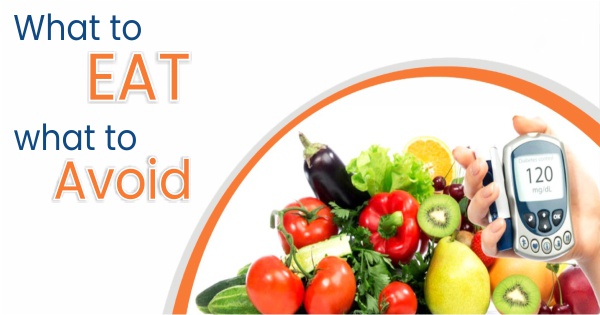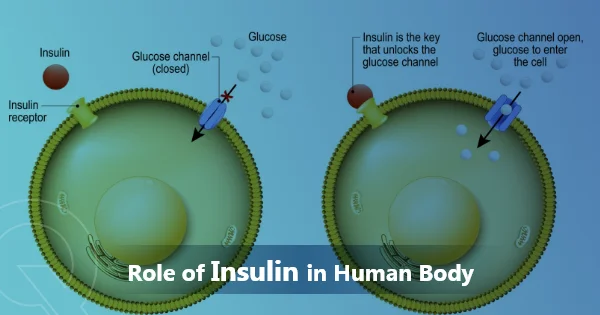Contents
Overview
Diabetes Mellitus is a disease caused by high blood sugar levels, also known as blood glucose, which is the primary energy source derived from the food you consume.
Insulin, a hormone produced by your pancreas, plays a significant role in transporting glucose into the cells of your body for energy. When the body fails to produce enough insulin, the glucose stays in your blood, and that condition is known as Diabetes Mellitus.
This condition develops gradually over time yet, has the potential to cause health problems in your body. While diabetes has no cure, it is possible to manage your levels by following a healthy diet and exercising regularly.
A healthy diet may also help manage weight, reduce the risk of cardiovascular disease, and help to live a longer and healthier life.
Types of Diabetes
There are four kinds of diabetes:
Type 1
It is a chronic autoimmune condition where the pancreas fails to produce enough insulin. Patients with Type 1 diabetes are required to take insulin injections for the rest of their life.
Type 2
An impairment in the way the body regulates and uses glucose as a fuel. With type 2 diabetes, the body either doesn’t produce enough insulin, or it resists insulin. This chronic condition results in too much sugar circulating in the bloodstream.
This type of diabetes can be controlled with
- Healthy lifestyle (exercise and healthy food)
- Medication
- In some cases, external insulin may be required
Gestational Diabetes
A form of hyperglycemia affecting pregnant women and is associated with complications to both mother and child. It can be controlled with exercise and medications.
Prediabetes
It is a condition where blood glucose levels are higher than usual but not high enough to merit a diabetes diagnosis.
What are the differences between Type 1 and Type 2 diabetes diets?
A diet for reducing diabetes is a nutritionally balanced meal centred on managing the body’s blood sugar levels and supporting a healthy weight.
However, there aren’t any significant differences in the principles of healthy eating and nutritious choices in both type 1 and type 2 diabetes.
Although for people with diabetes, taking external insulin, meal timing, and carbohydrate portion control is essential.
Portion control is an essential part of any successful diabetic diet and helps manage calorie intake and overall balance. Carbohydrates control, measuring cups and food scales may help measure serving sizes for different foods.
The key is to eat more frequently and in small portions. Your doctor may guide you on the right amount of food groups you should be eating. Using serving size strategies can help you stick to those guidelines.
Meal timing is essential for type 1 diabetics and those taking insulin. Consuming a large meal in the morning and smaller meals at lunch and dinner may help you cope with the high blood sugar levels and promote weight loss in your body.
A person with diabetes must spread carbohydrate intake throughout the day. Planning your meals in a balanced way keeps blood sugar controlled and the body energized throughout the day.
What is a recommended diet plan for diabetes?
Recommended Foods for a diabetic person include:
- Lean Proteins: Lean meat and meat alternatives are the best options for people with diabetes, as they must avoid unhealthy saturated and trans fats, which can raise cholesterol and increase the risk of heart disease.
Protein is an essential nutrient that plays a crucial role in maintaining the body’s cells, including muscle mass and is associated with reduced appetite and better weight management. Sources of lean protein include:
- Chicken
- Egg Whites
- Fish and seafood
- Low-fat dairy: Low-fat dairy is also a source of essential nutrients like calcium, vitamin D, and potassium and is associated with a reduced risk of type 2 diabetes. Low-fat dairy choices include:
- Fat-free or low-fat milk
- Plain, non-fat yoghurt
- Low-fat cheese
- Healthy Fats: Good unsaturated fats or healthy fats support heart health, weight management, improve blood cholesterol, and help lower blood pressure. The best fats for diabetes are unsaturated fats like omega-3, monounsaturated and polyunsaturated fats. Sources of healthy fats include:
- Salmon
- Egg yolks
- Olives
- Flax seeds
- Chia seeds
- Pumpkin seeds
- Sesame seeds
- Walnuts
- Almonds
- Hazelnuts
- Pistachios
- Peanuts
- Avocado
- Non-starchy vegetables: Non-starchy vegetables contain little carbohydrates and tend to be very low in calories. These include:
- Spinach
- Leafy Greens
- Carrots
- Cucumbers
- Radishes
- Mushrooms
- Squash
- Zucchini
- Asparagus
- Onion
- Eggplant
- Cabbage
- Broccoli
- Tomatoes
- Cauliflower
- Bell Peppers
- Okra
- Green Beans
- Pumpkin
- Starchy vegetables can contain more carbohydrates but still offer meaningful health benefits and nutrition. The best choices of starchy vegetables are:
- Green Peas
- Corn
- Pumpkin
- Butternut squash
- Sweet Potatoes
- Fruits: Fruits should be included in a well-managed diabetes diet. These include:
- Lemon
- Strawberries
- Watermelon
- Blackberries
- Raspberries
- Blueberries
- Kiwi
- Oranges
- Apples
- Apricots
- Peaches
- Pears
- Whole grains, Beans, and Lentils: Whole grain and complex carbohydrates help get more fibre and nutrition. Here are the best sources of complex carbohydrates:
- Whole Grain Bread
- Lentils
- Oats
- Millet
- Black Beans
- Chickpeas
- Quinoa
- Brown rice
- Whole grain barley
- Whole-grain rye
What food to avoid with diabetes?
A diabetic person should avoid:
- Added Sugars: Added sugars are a source of simple carbohydrates that are quickly absorbed into the bloodstream and linked to weight gain, diabetes, and many other chronic diseases. Common examples of added sugars include:
- Sugar
- Pasta
- White bread
- Flour
- Cookies
- Pastries
- White potatoes
- Corn syrup
- Brown sugar
- Refined carbohydrates: Common processed foods that tend to be high in refined carbohydrates include:
- Soda
- Candy
- Cakes
- Cookies
- Packaged Baked Goods
- Ice Cream
- Dairy-Based Desserts
- Saturated and Trans fats: Saturated and trans fats have been linked to increased blood cholesterol and risk of heart disease. Common sources are:
- Full Fat Milk
- Cheese
- Cream
- Meat
- Butter
- Other Full Fat Dairy
- High Fat Processed Foods
- Deep-fried foods
- Processed Red Meats: Processed red meat like bacon, sausage, corned beef is proven to increase the risk of cancer, heart disease, and diabetes.
- High Sodium Foods: High sodium intake is shown to cause poor heart health, especially in those with type 2 diabetes. To decrease sodium, limit the amount of salt and be mindful of the portion size in the below diet:
- Pizza
- Tomato Sauce
- Frozen Meals
- Processed Meat and Cheese
- Salty Snacks
- Pickles
- Cottage Cheese
- Bread
Disclaimer:
This blog is for informational purposes only and should not be construed as advice or as a substitute for consulting a physician. It is not a substitute for medical advice or treatment from a healthcare professional.
Sources





